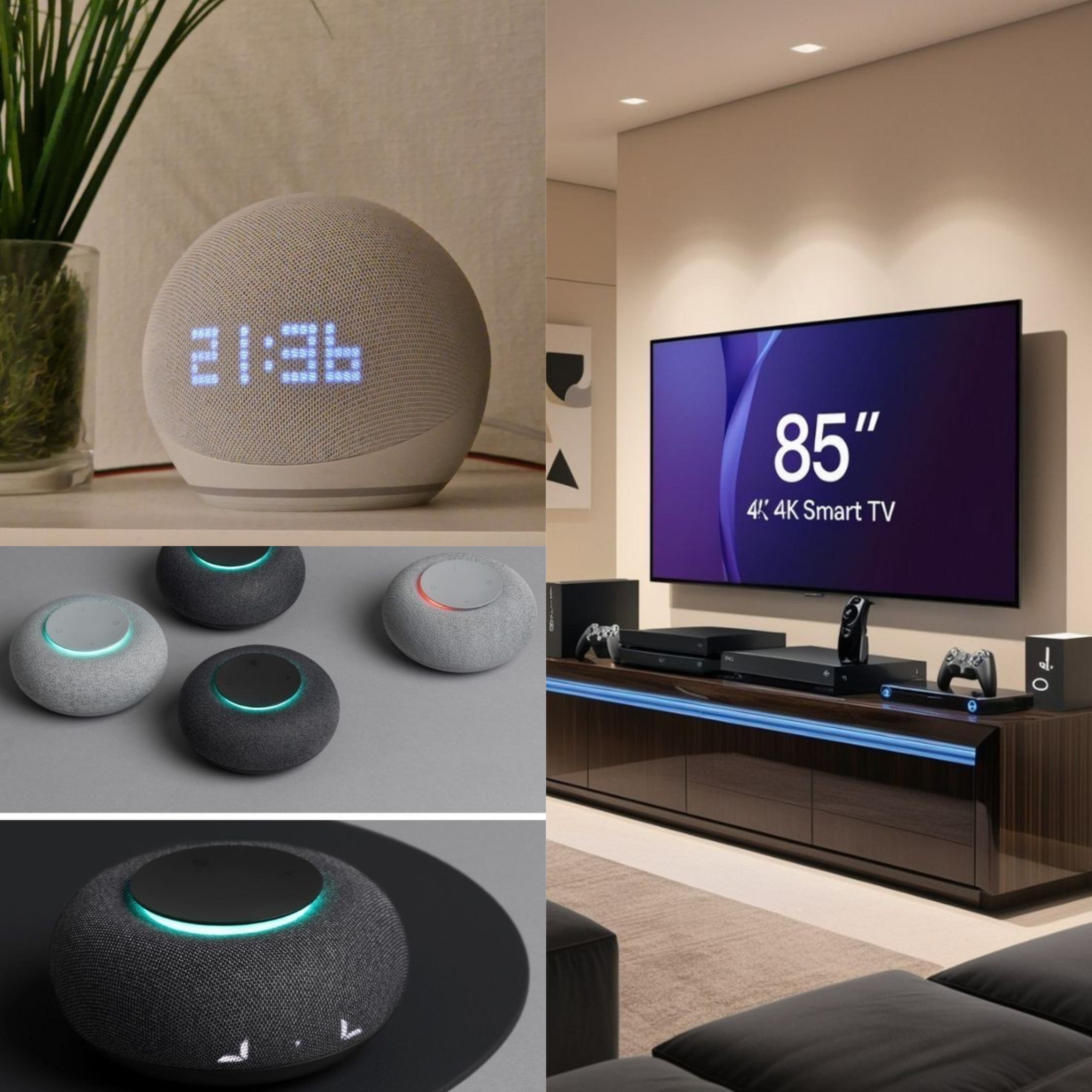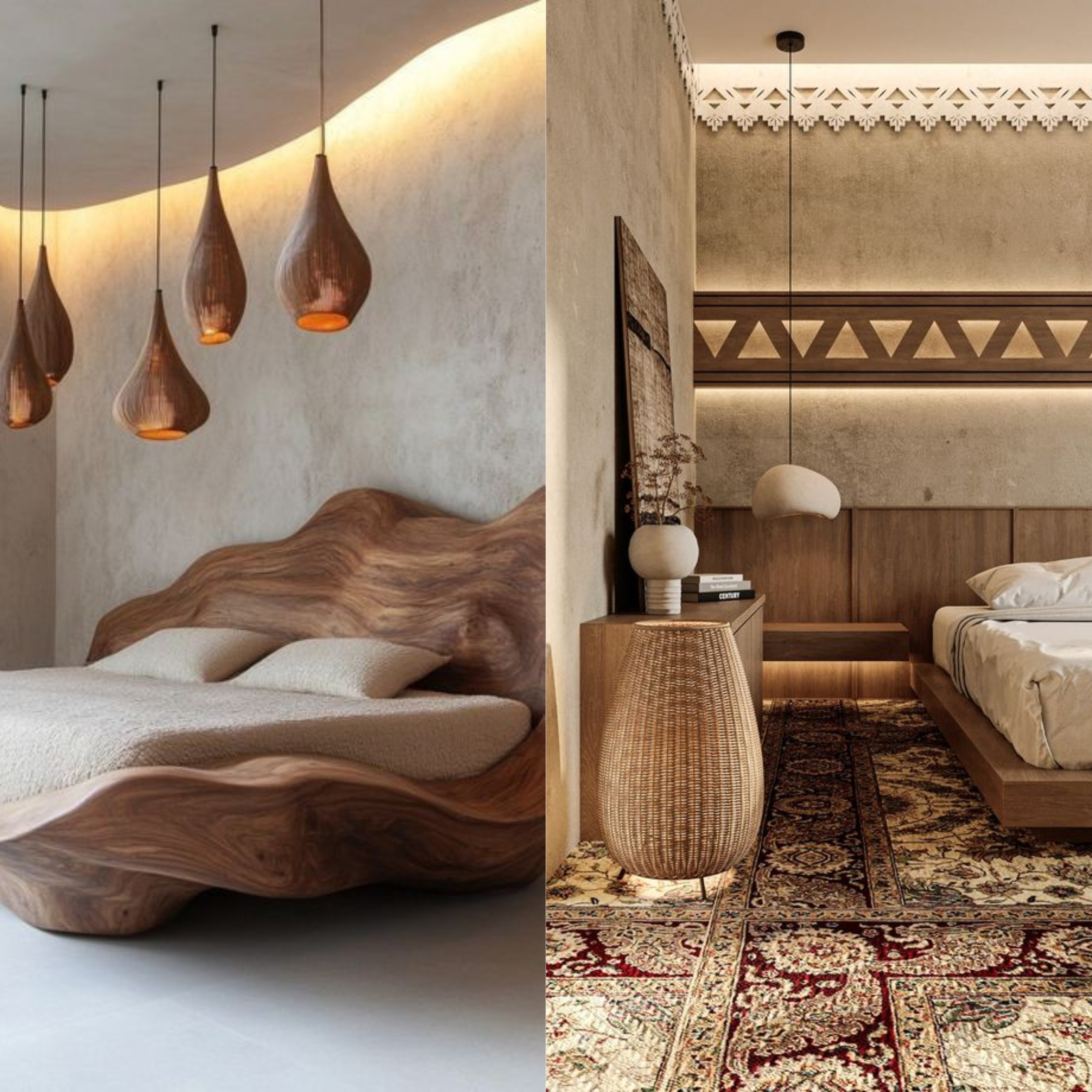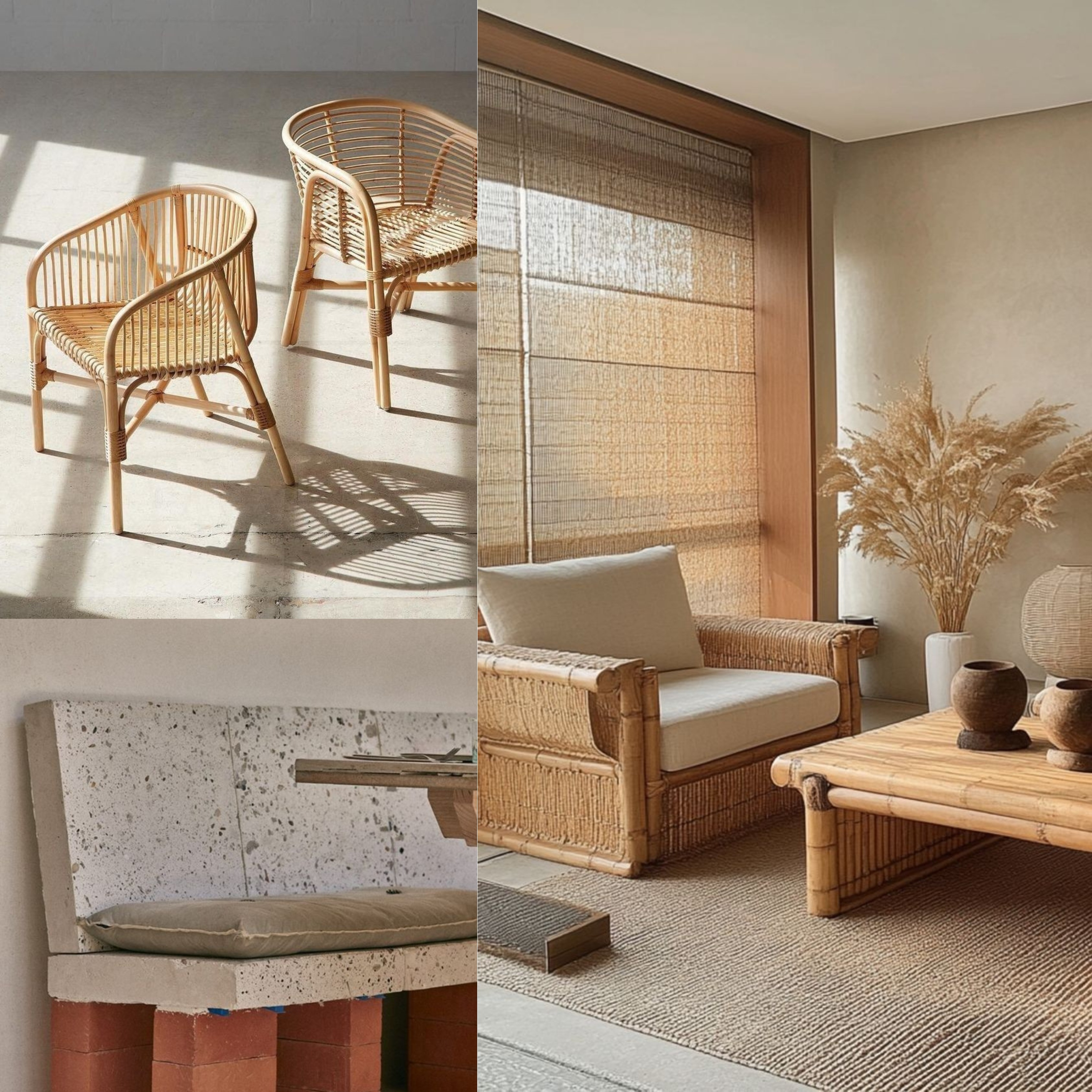Premium Interiors
Refers to high-end, luxurious interior design that emphasizes top-quality materials, bespoke craftsmanship, and exclusive design elements.
Key Characteristics:
◉ Custom-made furniture and fixtures.
◉ Use of luxury materials like marble, hardwood, leather, and designer fabrics.
◉ Incorporation of high-end brands and technology (e.g., smart home systems).
◉ Sophisticated, timeless, or trendy aesthetics.
◉ Often showcases a unique or exclusive look tailored to the client’s preferences.
Target Audience:
High-budget homeowners, luxury hotels, upscale commercial spaces.


Affordable Interiors
Focuses on providing cost-effective, practical, and stylish interior design solutions that fit within a budget.
Key Characteristics :
◉ Use of budget-friendly or alternative materials like laminate, MDF, or engineered wood.
◉ Modular designs and ready-made furniture.
◉ Functional and practical layouts with simple aesthetics.
◉ Emphasis on value for money and durability.
Target Audience:
Budget-conscious individuals, renters, startups, and small businesses.
When designing interiors, there is a significant distinction between premium and affordable interiors. These differences impact the choice of materials, finishes, furniture, and overall design approach. Below is a detailed comparison of premium versus affordable interiors, focusing on various key elements:
1. Materials
Premium Interiors:
High-Quality Materials:
Premium interiors typically use high-end, durable, and luxurious materials that are often rare or costly.
Wood:
Expensive hardwoods like teak, walnut, mahogany, or exotic woods like rosewood and ebony.
Marble & Natural Stones:
Use of Italian marble, onyx, and other high-quality stones for flooring, countertops, or accent walls.
Fabrics:
Luxurious fabrics like silk, velvet, leather, and custom-designed textiles.
Metals:
High-end metals like brass, gold, chrome, or polished stainless steel for hardware and fixtures.


Affordable Interiors:
Cost-Effective Materials:
Affordable interiors often use more budget-friendly alternatives that mimic the look of premium materials.
Wood:
Softwoods such as pine, plywood, or engineered woods like MDF.
Synthetic Materials:
Use of engineered stone (like quartz), ceramic tiles, or laminate surfaces that replicate marble or granite.
Fabrics:
Polyester, cotton, linen, or faux leather, which offer good durability without the high cost of premium materials.
Metals:
Simpler finishes like brushed nickel or aluminum for hardware and light fixtures.
2. Furniture and Fixtures
Premium Interiors:
◘ Custom and Designer Pieces:
Premium interiors feature bespoke furniture or designer pieces that are unique and handcrafted.
◘ High-quality brands, vintage or antique furniture, and custom-made upholstery.
◘ Artisan craftsmanship with intricate details and superior finishing.
◘ Designer lighting fixtures like crystal chandeliers, designer sconces, or bespoke pendant lights.


Affordable Interiors:
◘ Mass-Produced or Ready-Made Furniture: Affordable interiors often rely on mass-produced furniture from popular brands, which is functional but less unique.
◘ Flat-pack or modular furniture from retailers.
◘ Functional over aesthetic: Simpler designs that prioritize practicality, cost-efficiency, and durability.
◘ Standard lighting fixtures that may lack unique design features or intricate details.
3. Design and Finishes
Premium Interiors:
◘ Sophisticated Design:
The design of premium interiors is often more complex, with a focus on high-end finishes, fine details, and curated aesthetics.
◘ Complex layouts: Use of arches, vaulted ceilings, or intricate moldings like crown molding, wainscoting, or coffered ceilings.
◘ Attention to Detail: Unique design elements, such as custom cabinetry, hand-painted murals, or special finishes on walls like Venetian plaster.
◘ Tailored Design: Every element is personalized, from furniture to wall treatments, often with a minimalist or luxury style focus.


Affordable Interiors:
◘Simple and Practical Design: Affordable designs often follow a straightforward approach that is functional, with less attention to fine details.
◘ Budget-friendly layouts: Standard layouts with basic designs and practical solutions for living spaces.
◘ Basic finishes: Painted drywall, basic wallpaper, or simple vinyl flooring instead of expensive, textured wall treatments or high-end floors.
◘ DIY or Pre-packaged solutions: The design may focus on DIY projects or using pre-existing kits for easy installation, which are cost-effective but less luxurious.
4. Space and Layout
Premium Interiors:
◘ Spacious and Open Layouts: Premium interiors often prioritize expansive, open layouts that allow for flexibility and sophistication.
◘ High ceilings, large windows, and the use of natural light.
◘ Open-plan designs that blend living, dining, and kitchen areas seamlessly.
◘ Luxury amenities such as home theaters, spa-like bathrooms, or custom walk-in closets.


Affordable Interiors:
◘ Maximizing Smaller Spaces: Affordable interiors often make the most of smaller spaces, focusing on efficiency and practicality.
◘ Compact layouts that prioritize function, often using multi-purpose furniture.
◘ Smaller windows, or an emphasis on creating cozy, intimate spaces rather than expansive open areas.
◘ Basic or standard amenities such as one standard bathroom and modest-sized bedrooms.
5. Color Scheme and Accents
Premium Interiors:
◘ Rich and Luxurious Color Palette: Premium interiors often use a rich, well-curated color palette that creates depth and harmony.
◘ Jewel tones like emerald green, royal blue, and burgundy, paired with metallic accents like gold or silver.
◘ Thoughtfully placed art pieces, unique sculptures, and luxury textiles that complement the overall theme.
◘ Custom wallpaper or designer paint that creates a unique ambiance.


Affordable Interiors:
◘ Neutral and Practical Color Scheme: Affordable interiors tend to use neutral tones or easy-to-match color schemes that offer flexibility.
◘ A mix of whites, grays, beige, or light pastels, as well as budget-friendly wall coverings like painted walls or peel-and-stick wallpaper.
◘ Decorative accents are often from budget retailers, such as mass-produced art prints or inexpensive decorative objects like throw pillows and inexpensive vases.
6. Technology and Smart Features
Premium Interiors:
◘ Advanced Smart Home Features: Premium interiors often incorporate high-tech, smart home systems for enhanced comfort and convenience.
◘ Smart lighting, motorized window treatments, state-of-the-art audio systems, and advanced HVAC systems.
◘ Integrated security systems, smart appliances, and high-end home automation systems.


Affordable Interiors:
◘ Basic Technology Integration: Affordable interiors tend to incorporate simpler, more accessible tech.
◘ Basic smart devices such as smart thermostats, smart speakers, and budget-friendly home assistants.
◘ Fewer complex integrations: technology might focus more on simple entertainment setups, like TVs, and Bluetooth speakers.
7. Sustainability
Premium Interiors:
◘ Eco-friendly Luxury: Premium interiors often integrate sustainability as a key feature, using eco-friendly materials and technologies that are both stylish and environmentally conscious.
◘ Sustainable, reclaimed wood, low-VOC paints, and energy-efficient appliances.
◘ Attention to sourcing locally and fair-trade products for furniture and décor.


Affordable Interiors:
◘ Budget-Friendly Sustainability: While sustainability is a consideration, the options are more budget-oriented.
◘ Use of recycled or upcycled materials, affordable sustainable furniture, and energy-efficient appliances that still align with a budget-conscious approach.
Conclusion:
◉ Premium Interiors focus on luxury, quality materials, unique designs, and personalized spaces, often incorporating bespoke elements and sophisticated technologies. The budget for premium interiors allows for higher-end choices that reflect exclusivity and elegance.
◉ Affordable Interiors, on the other hand, prioritize functionality, cost-efficiency, and practical design solutions. They use more readily available materials, mass-produced furniture, and simpler finishes, while still creating a comfortable and stylish living space.
◉ Ultimately, the choice between premium and affordable interiors depends on your budget, lifestyle, and design preferences. A premium design will create a luxurious atmosphere but at a higher cost, while an affordable design can still be beautiful, functional, and stylish without the hefty price tag.



